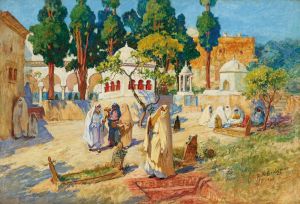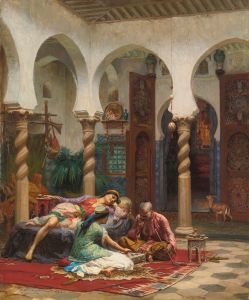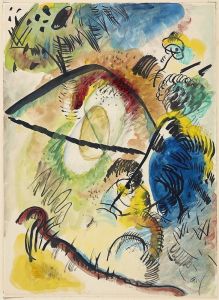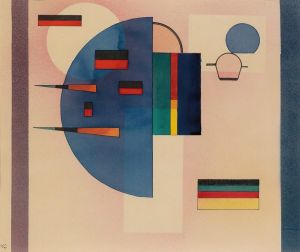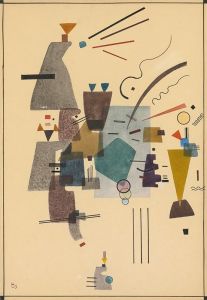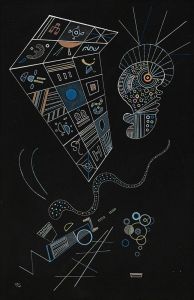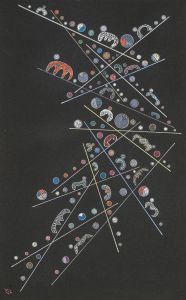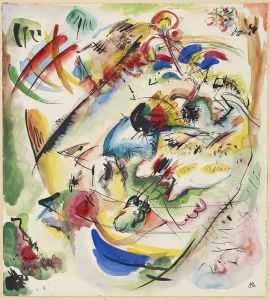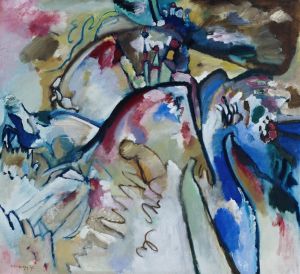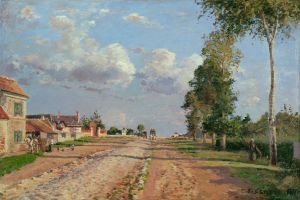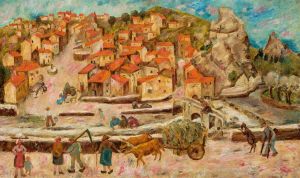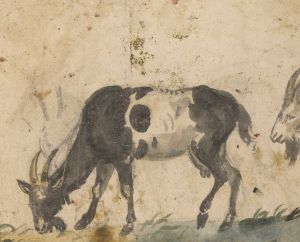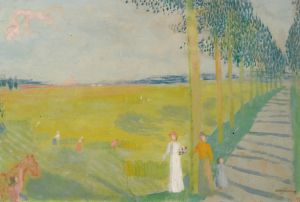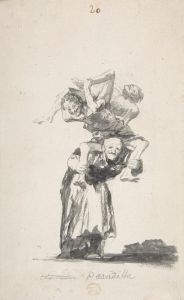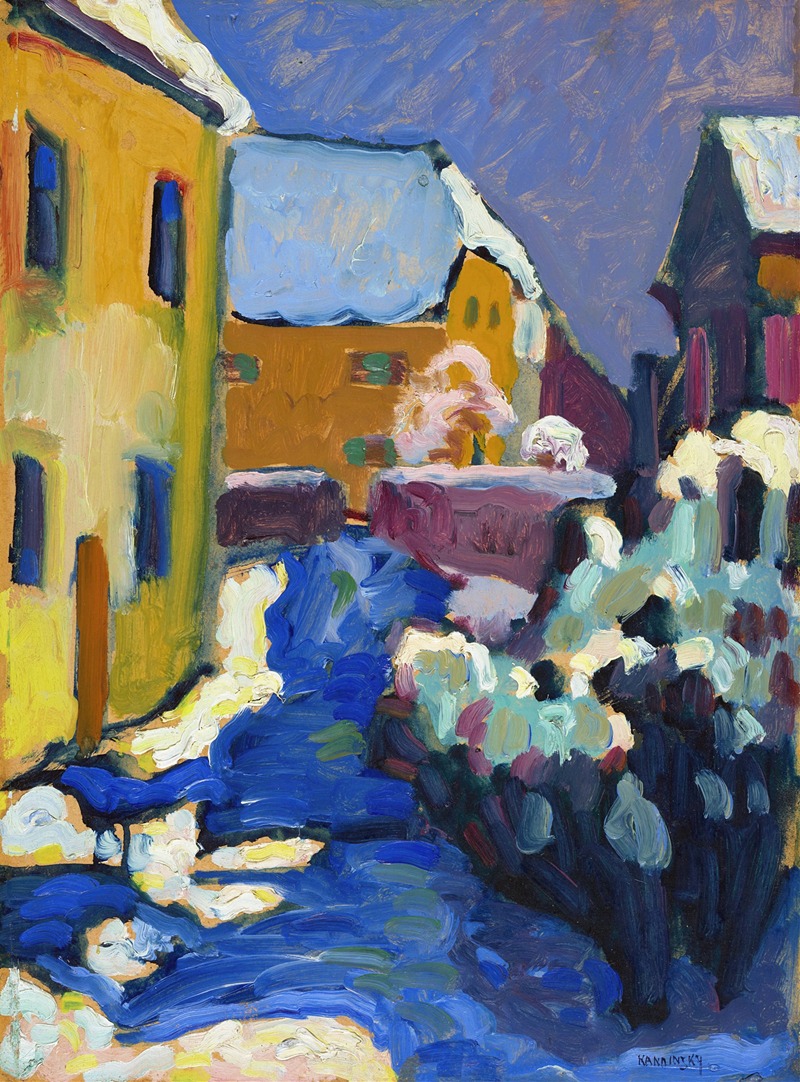
Cemetery and rectory in Kochel
A hand-painted replica of Wassily Kandinsky’s masterpiece Cemetery and rectory in Kochel, meticulously crafted by professional artists to capture the true essence of the original. Each piece is created with museum-quality canvas and rare mineral pigments, carefully painted by experienced artists with delicate brushstrokes and rich, layered colors to perfectly recreate the texture of the original artwork. Unlike machine-printed reproductions, this hand-painted version brings the painting to life, infused with the artist’s emotions and skill in every stroke. Whether for personal collection or home decoration, it instantly elevates the artistic atmosphere of any space.
Wassily Kandinsky, a pioneering figure in abstract art, painted "Cemetery and Rectory in Kochel" in 1909. This work is a notable example from his early period, where he was transitioning from representational art to abstraction. Kandinsky, born in Moscow in 1866, was deeply influenced by his experiences in various European art centers, and his work often reflects a synthesis of these diverse influences.
"Cemetery and Rectory in Kochel" was created during a time when Kandinsky was exploring the expressive potential of color and form. The painting depicts a scene in the village of Kochel am See, located in Bavaria, Germany. This region was significant for Kandinsky as he spent considerable time there, and it influenced his artistic development. The painting captures the essence of the Bavarian landscape, with its characteristic architecture and natural surroundings.
In this work, Kandinsky employs a vivid color palette, which would become a hallmark of his style. The use of bold colors and dynamic forms in "Cemetery and Rectory in Kochel" illustrates his interest in the emotional and spiritual effects of color, a theme he would explore more deeply in his later theoretical writings, such as "Concerning the Spiritual in Art" published in 1911. This painting reflects his belief that art should transcend mere representation and evoke a deeper, more spiritual response from the viewer.
The composition of the painting is structured yet fluid, with the rectory and cemetery depicted in a way that emphasizes their geometric forms. This approach hints at Kandinsky's move towards abstraction, where he sought to depict the underlying spiritual reality rather than the mere outward appearance of objects. The landscape is rendered with a sense of movement and energy, suggesting the influence of both Impressionism and Fauvism, movements that Kandinsky admired for their innovative use of color and form.
Kandinsky's time in Kochel and the surrounding areas was crucial in his artistic evolution. The serene yet vibrant landscapes provided a perfect backdrop for his experiments with color theory and abstraction. "Cemetery and Rectory in Kochel" stands as a testament to this period of exploration and transition, capturing a moment when Kandinsky was on the cusp of developing his unique abstract language.
This painting is part of Kandinsky's broader body of work that bridges his early representational style and his later abstract compositions. It offers insight into his artistic journey and the influences that shaped his groundbreaking approach to art. Today, Kandinsky is celebrated as a pioneer of abstract art, and works like "Cemetery and Rectory in Kochel" are studied for their innovative use of color and form, as well as their contribution to the development of modern art.
Kandinsky's legacy is profound, and his works continue to inspire artists and art enthusiasts around the world. "Cemetery and Rectory in Kochel" remains an important piece in understanding the trajectory of his artistic career and the evolution of abstract art in the early 20th century.





